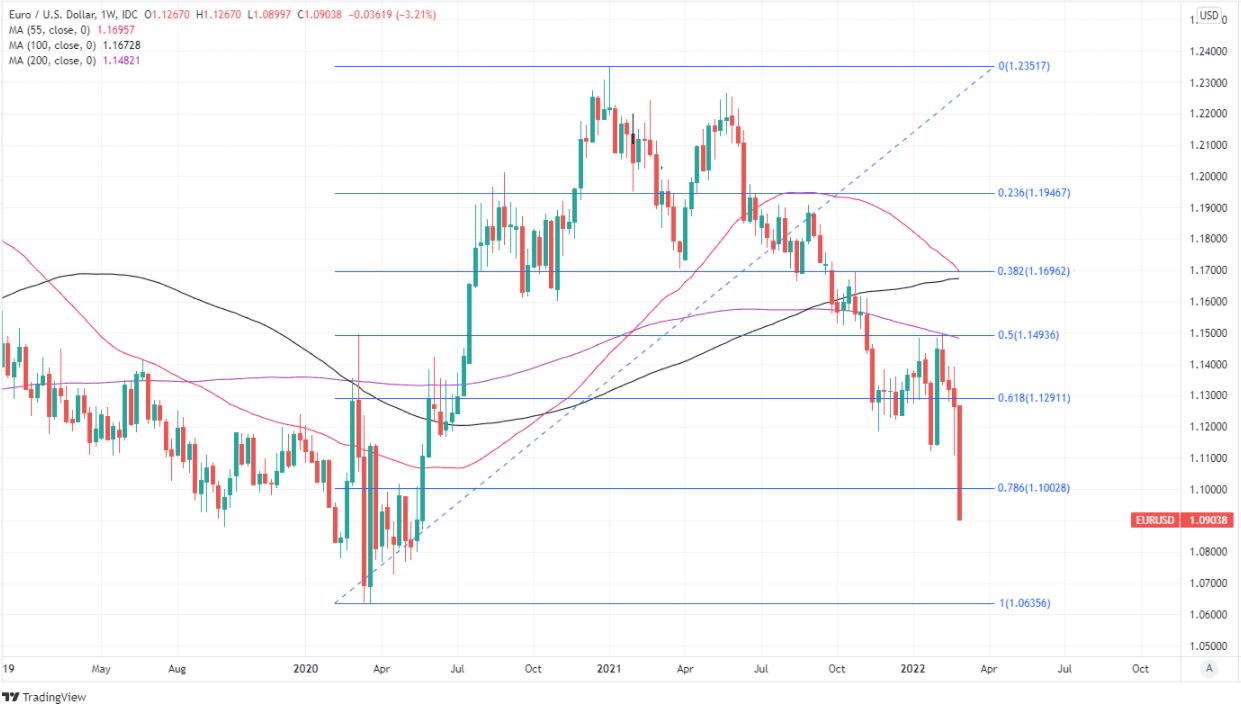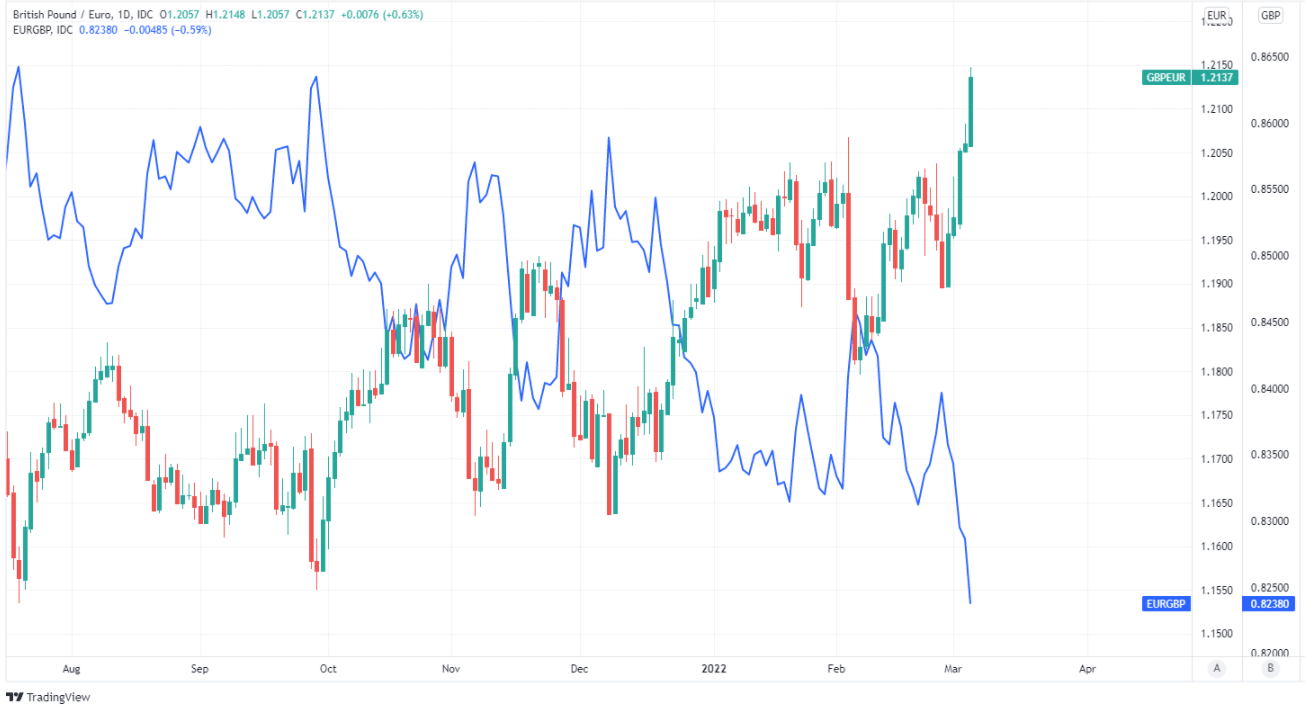Why an Eventual Euro Recovery Could Be a Firecracker
- Written by: James Skinner
-
- EUR/USD vulnerable to CEE losses, energy prices
- As break of 1.1002 support brings 1.08 into view
- EUR/USD risking deeper loss to 1.0635 thereafter
- CEE & EM FX defence adds to EUR/USD’s decline
- But reserve rebuild to bolster eventual recovery

Image © Pound Sterling Live
The Euro to Dollar rate was on the verge of its largest weekly decline since the coronavirus first closed down the global economy on Friday, although losses are driven by more than just Eurozone problems and it’s these other drivers that could eventually promote a firecracker of a recovery.
Europe’s single currency tumbled as natural gas prices reached for the stars while Central and Eastern European currencies took further heavy losses amid an escalating financial, economic, humanitarian and military fallout over the Russian attempt at subjugating Ukraine.
Stock markets crumbled and government bonds were bought in a pattern of price action that already saw some central banks in the European neighbourhood intervening in the market in an attempt to stem the depreciation of their currencies.
As was seen during the most acute stage of the coronavirus crisis, these kinds of policy responses often have implications for EUR/USD both in times of turmoil as well as in phases of recovery.
“When central banks intervene to defend against excessive depreciation, they most often sell US Dollars to buy their domestic currency. All else equal this slows the Dollar appreciation,” writes Zach Pandl, co-head of global foreign exchange strategy at Goldman Sachs, in a March 2020 research note.
Above: Euro to Dollar rate shown at weekly intervals with Fibonacci retracements of 2020 rally indicating possible areas of support for EUR/USD.
- EUR/USD reference rates at publication:
Spot: 1.0935 - High street bank rates (indicative band): 1.0540-1.0624
- Payment specialist rates (indicative band): 1.0830-1.0875
- Find out more about market-beating rates and service, here
- Set up an exchange rate alert, here
“Selling USD changes the currency composition of reserve assets, so reserve managers may take rebalancing operations, buying USD vs other reserve currencies like EUR or GBP to replenish supply of the preferred intervention currency. As a result, FX intervention may paradoxically boost the Dollar vs certain G10 crosses,” Pandl and colleagues also said.
While the U.S. Dollar is often the dominant holding in central bank reserve baskets, the limited available data suggests that Central and Eastern European central banks tend to hold large amounts of Euros too and presumably due to their economies’ large exposures to the Eurozone.
It’s also the case that for those central banks in particular, it would be most efficient for them to sell Euros in exchange for Dollars and then Dollars in exchange for their own currencies in the current environment.
Such transactions would have the effect of weighing on EUR/USD while suppressing EUR/CEE and USD/CEE currencies; and the performance of GBP/EUR over the week to Friday could be an indication that this is exactly what they’ve been doing.
Above: Pound to Euro rate shown at daily intervals alongside EUR/GBP.
Secure a retail exchange rate that is between 3-5% stronger than offered by leading banks, learn more.
“Pressure has continued to build around a break below 1.1000 in EUR/USD. Divergence in policy expectations and equity performance (European equities have weakened more than the US) have driven the pair’s short-term fair value lower: we currently estimate it at 1.0980,” says Chris Turner, global head of markets and regional head of research for UK & CEE at ING.
While Euro-Dollar losses were significant and ongoing on Friday, price action during the opening half of 2020 is potentially an illustration of what readers can expect going forward including when it comes to an eventual recovery.
Selling can leave official reserve baskets at suboptimal levels and the composition of the basket out of sync with mandated levels, ultimately necessitating a reversal of those sales at a later date, which would potentially set the Euro up for a significant rally at some time in the future.
For the time being however, the conflict in Ukraine is posing a significant risk to the European and broader global economic outlook, as well as another mammoth policy challenge for the European Central Bank (ECB) ahead of its March monetary policy decision next Thursday.
“Oil prices remain the primary EUR driver, though markets are likely anticipating a dovish ECB. We see early signs of EURUSD bottoming out, though, but conviction is low given the uncertainty. That said, we like the prospects of EURGBP topside over the next two months on a mix of mispriced relative growth and terminal rate pricing,” says Mark McCormick, global head of FX strategy at TD Securities.






